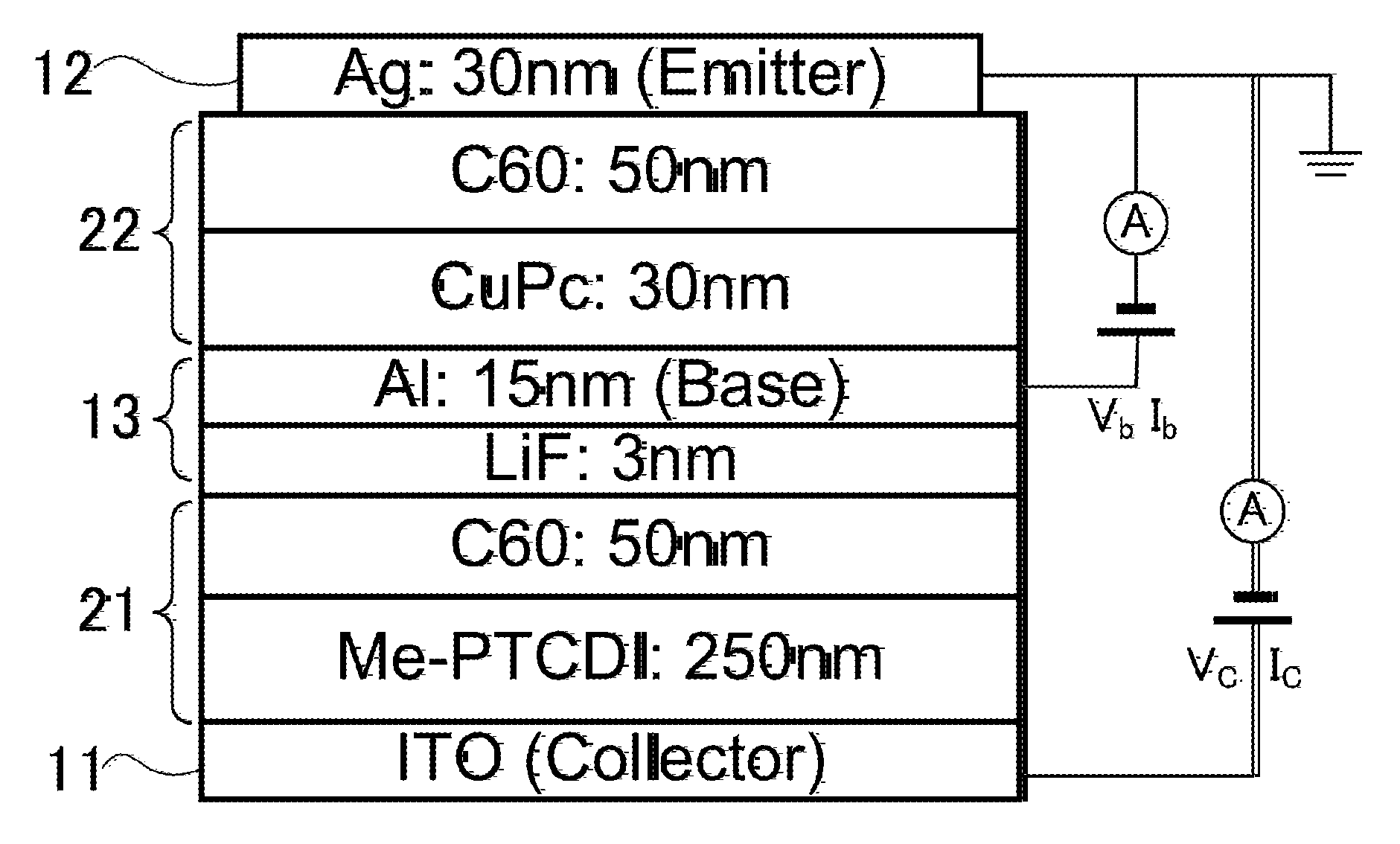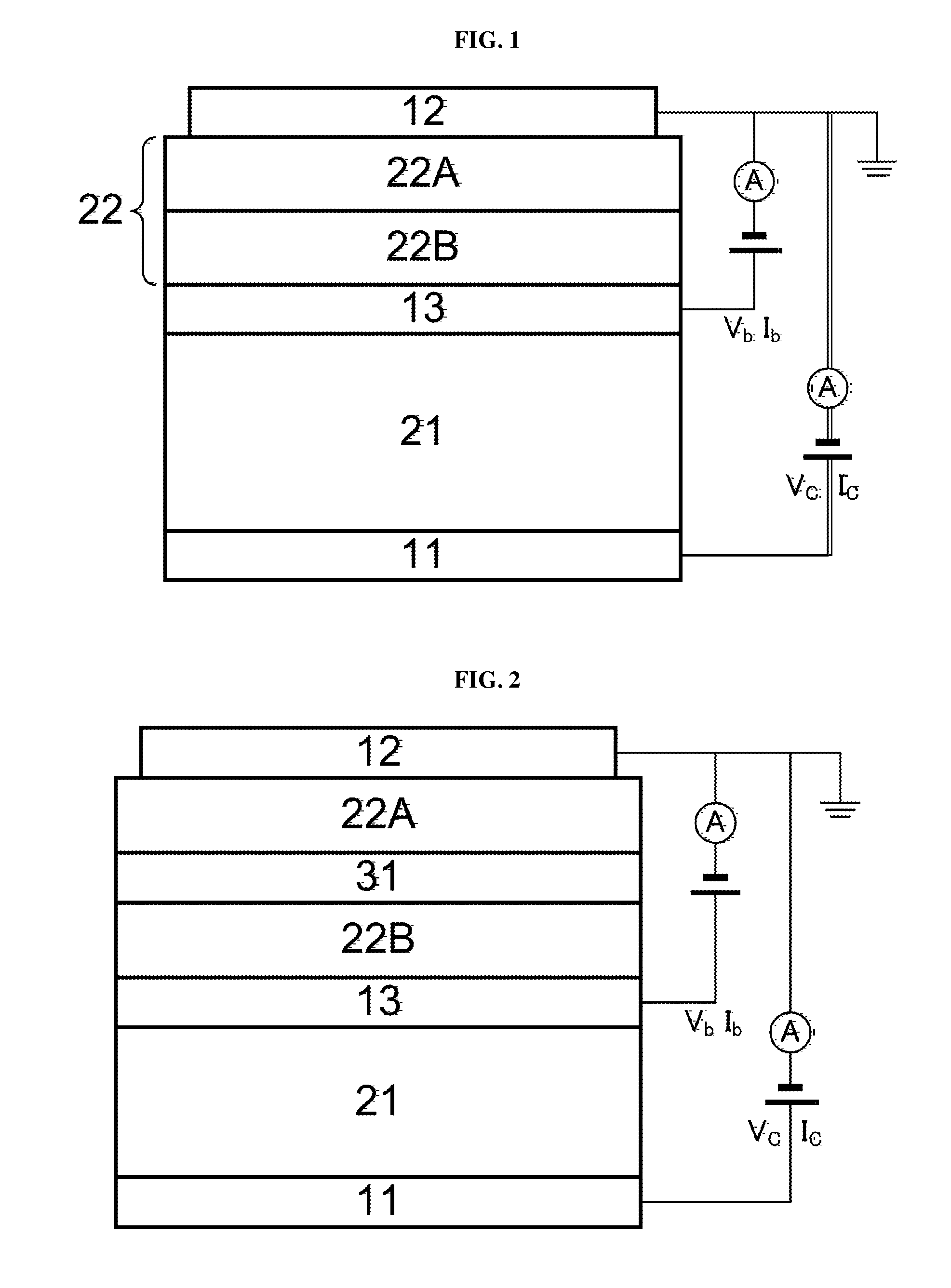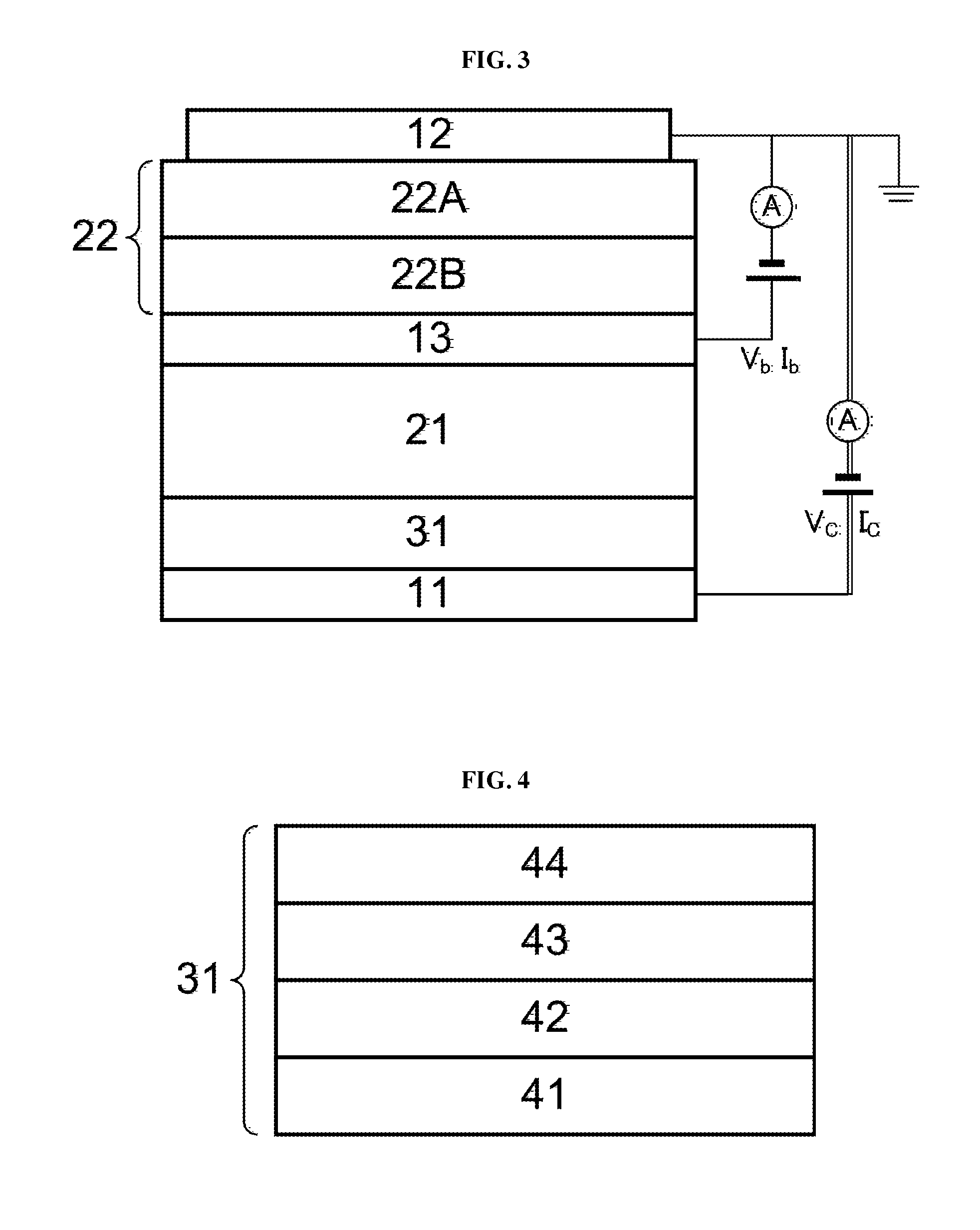Current-amplifying transistor device and current-amplifying, light-emitting transistor device
a technology of current-amplifying transistors and transistors, which is applied in the direction of transistors, thermoelectric devices, nano-informatics, etc., can solve the problems of hardly providing a large current of transistors and the difficulty of shortening the channel length to several micrometers or less, and achieves a large current, high contrast, and high on/off ratio
- Summary
- Abstract
- Description
- Claims
- Application Information
AI Technical Summary
Benefits of technology
Problems solved by technology
Method used
Image
Examples
example 1
Fabrication of Transistor Device by Diode Structure (C60 / Copper Phthalocyanine)
[0101]As illustrated in FIG. 5, an ITO-coated transparent substrate was provided as a collector electrode 11. After an organic semiconductor layer (average thickness: 250 nm) of N,N′-dimethylperylenetetracarboxylic acid diimide (Me-PTCDI, organic semiconductor material) was formed on the collector electrode 11, another organic semiconductor layer (average thickness: 50 nm) of fullerene (C60) was formed to provide a collector layer 21. Subsequent to the formation of an electrode layer (average thickness: 3 nm) of lithium fluoride as an electron injection layer, a base electrode layer (average thickness: 15 nm) of aluminum was stacked to form a base electrode 13. On the base electrode 13, a p-type organic semiconductor layer (average thickness: 30 nm) of copper phthalocyanine and an n-type organic semiconductor layer (average thickness: 50 nm) of fullerene (C60) were stacked in this order by a vacuum deposi...
example 2
Fabrication of Transistor Device by Diode Structure (C60 / Pentacene)
[0103]Similar to Example 1, an ITO-coated transparent substrate was provided as a collector electrode 11. After an organic semiconductor layer (average thickness: 250 nm) of N,N′-dimethylperylenetetracarboxylic acid diimide (Me-PTCDI, organic semiconductor material) was formed on the collector electrode 11, another organic semiconductor layer (average thickness: 50 nm) of fullerene (C60) was formed to provide a collector layer 21. Subsequent to the formation of an electrode layer (average thickness: 3 nm) of lithium fluoride as an electron injection layer on the collector layer 21, a base electrode layer (average thickness: 15 nm) of aluminum was stacked to form a base electrode 13. On the base electrode 13, a p-type organic semiconductor layer (average thickness: 30 nm) of pentacene and an n-type organic semiconductor layer (average thickness: 50 nm) of fullerene (C60) were stacked in this order by a vacuum depositi...
example 3
Fabrication of Light-Emitting Transistor Device by Diode Structure
(B4PYMPM / Pentacene)
[0105]As depicted in FIG. 6, an ITO-coated transparent substrate was provided as a collector electrode 11. After an organic semiconductor layer (average thickness: 250 nm) of N,N′-dimethylperylenetetracarboxylic acid diimide (Me-PTCDI, organic semiconductor material) was formed on the collector electrode 11, another organic semiconductor layer (average thickness: 50 nm) of fullerene (C60) was formed to provide a collector layer 21 of a stacked structure. Subsequent to the formation of an electrode layer (average thickness: 3 nm) of lithium fluoride as an electron injection layer on the collector layer 21, an electrode layer (average thickness: 15 nm) of aluminum was stacked to form a base electrode 13. On the base electrode 13, a p-type organic semiconductor layer (average thickness: 30 nm) 22B of pentacene, a hole transport layer (average film thickness: 10 nm) of α-NPD [Bis(N-(1-naphthyl)-N-phenyl...
PUM
 Login to View More
Login to View More Abstract
Description
Claims
Application Information
 Login to View More
Login to View More - R&D
- Intellectual Property
- Life Sciences
- Materials
- Tech Scout
- Unparalleled Data Quality
- Higher Quality Content
- 60% Fewer Hallucinations
Browse by: Latest US Patents, China's latest patents, Technical Efficacy Thesaurus, Application Domain, Technology Topic, Popular Technical Reports.
© 2025 PatSnap. All rights reserved.Legal|Privacy policy|Modern Slavery Act Transparency Statement|Sitemap|About US| Contact US: help@patsnap.com



